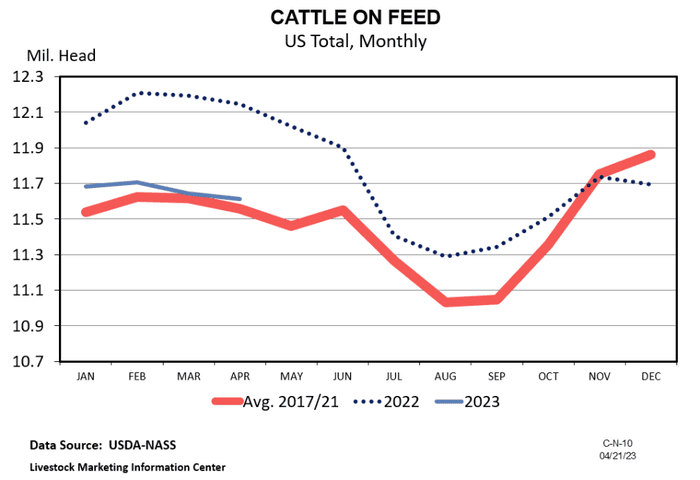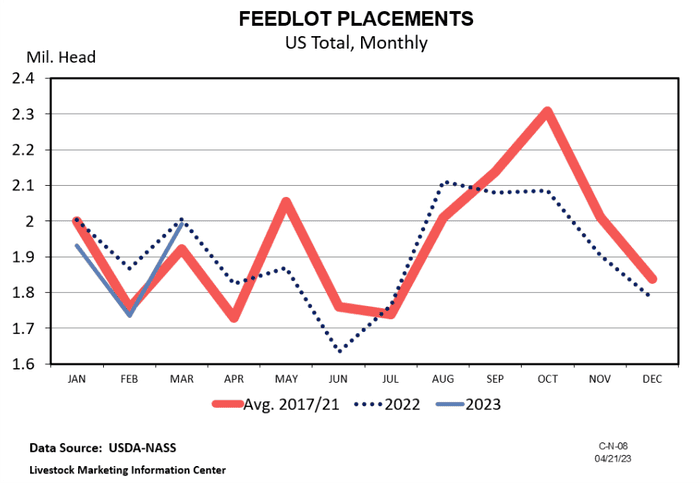April cattle on feed – What to make of March placements
Producers have to consider Mexican cattle imports when lookin at the cattle on feed numbers.
April 26, 2023

USDA released the April Cattle on Feed report on Friday April 21. This monthly publication estimates the number of cattle on feed at feedlots with capacity of over 1,000 head and serves as a measure of likely beef production over the next several months. While the cow herd has been decreasing in size for several years, an increase in the number of females in the beef system kept on-feed numbers running relatively high for much of 2022. Finally in the fall, the long-expected shift occurred, and on-feed numbers have been running below year-ago levels since then.

In Friday’s report, April 1, 2023, on-feed inventory was estimated to be down about 4.5% from April 1, 2022. While this might not immediately raise any eyebrows from casual observers, this on feed number was higher than expected and really came down to March placements being greater than most pre-report estimates. The net effect was that total on-feed inventory was virtually unchanged from March 1 to April 1, which was counter to what many expected. As I write this on Monday April 24, live cattle futures were mixed while feeder cattle futures were down a bit. On the feeder cattle board, the negative price change lessens as we move away from the spring contracts.
While I am hesitant to make light of any surprise in a major USDA report, it does appear that the market response has been pretty minimal. This is especially true when one is reminded that feeder cattle futures have been steadily increasing for months. Even as this report is digested, fall feeder cattle futures are still above $230 per cwt and well above where they started 2023. Further, there have been numerous factors impacting placement patterns over the last couple of years with high feed prices and drought being at the top of the list.
There are some possible explanations for the larger-than-expected March placements number. First, March is a month when cattle are often moved off of wheat pasture. Continued dry weather in much of the Southern Plains, combined with high wheat prices, likely impacted movement of feeders last month. Secondly, live cattle imports from Mexico were higher in March, which would contribute to placement numbers. And finally, there is still a lot of carry on the feeder cattle board, so it is very possible that feedlots are aggressively buying feeders ahead, in anticipation of the rising price levels suggested by deferred feeder cattle futures contracts. Put simply, I absolutely think that feedlot placements bears watching in the coming months, but I suspect the larger placement number last month had more to do with timing than a major shift in market fundamentals.

You May Also Like



